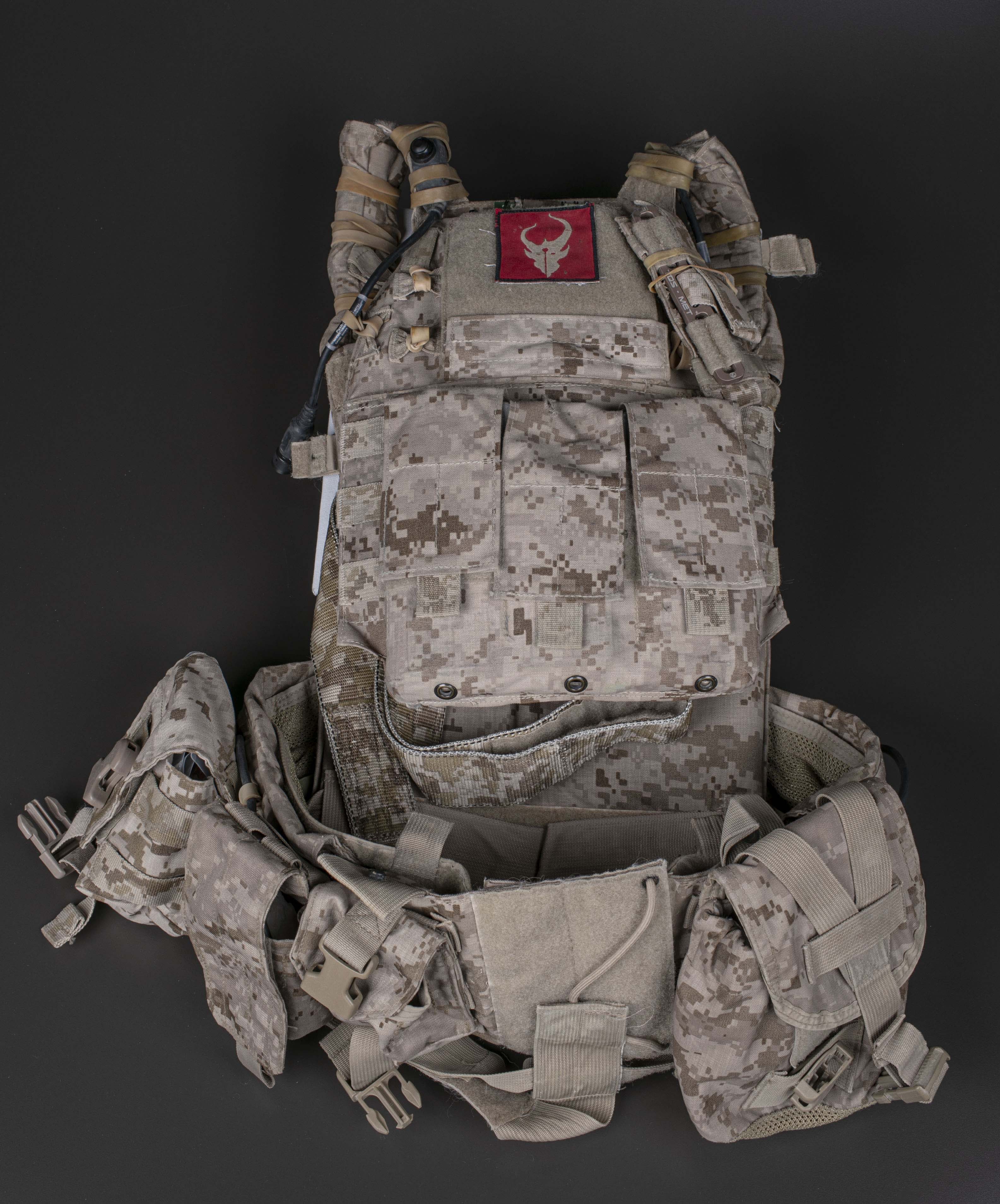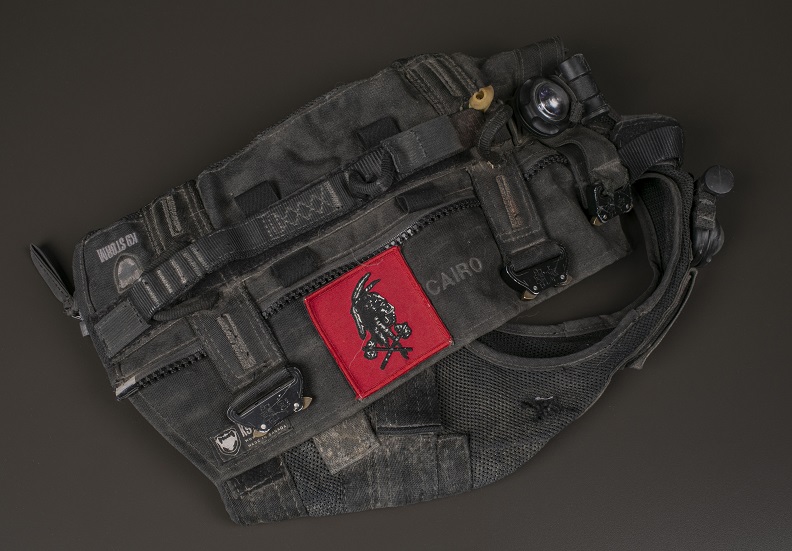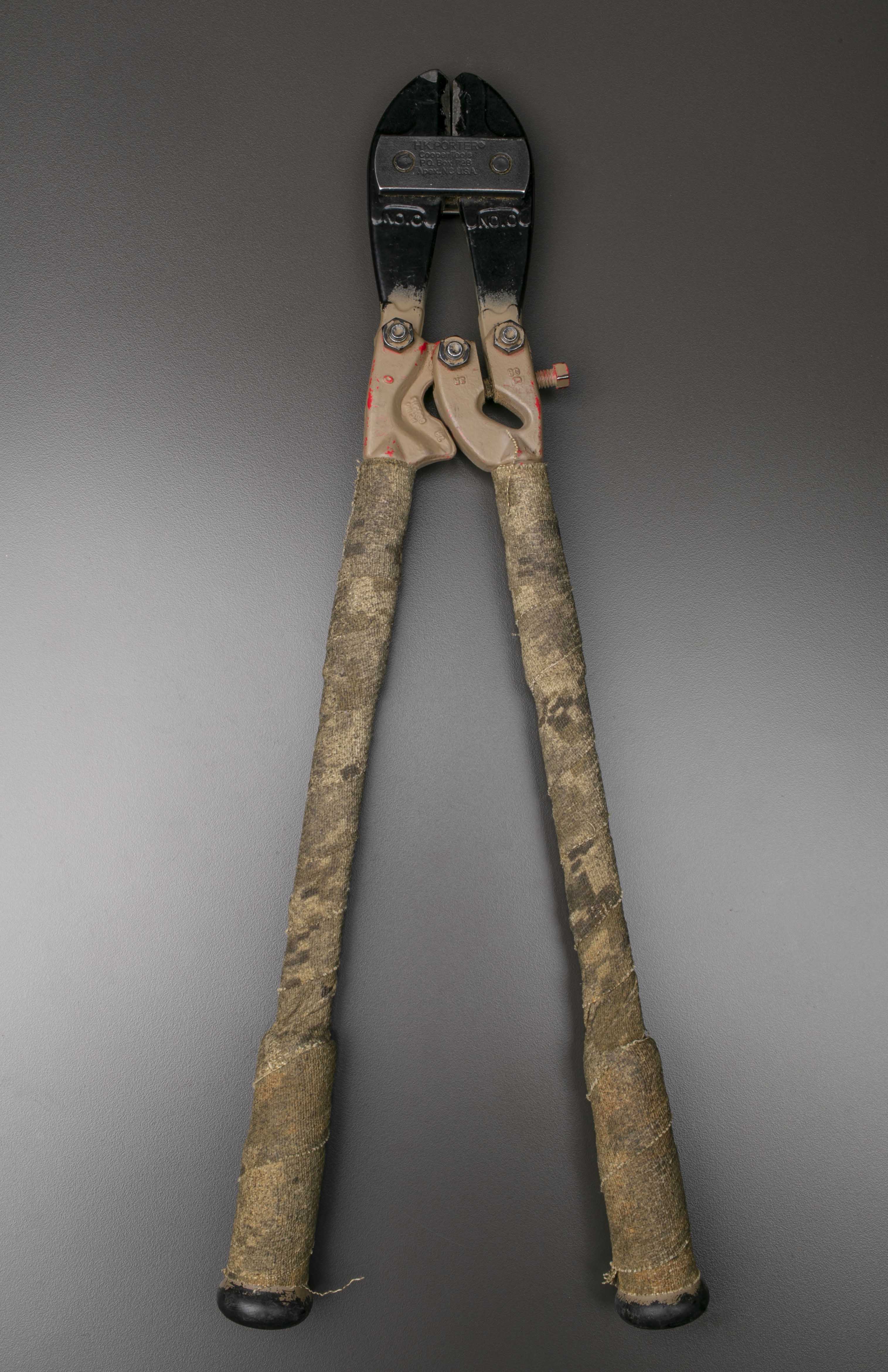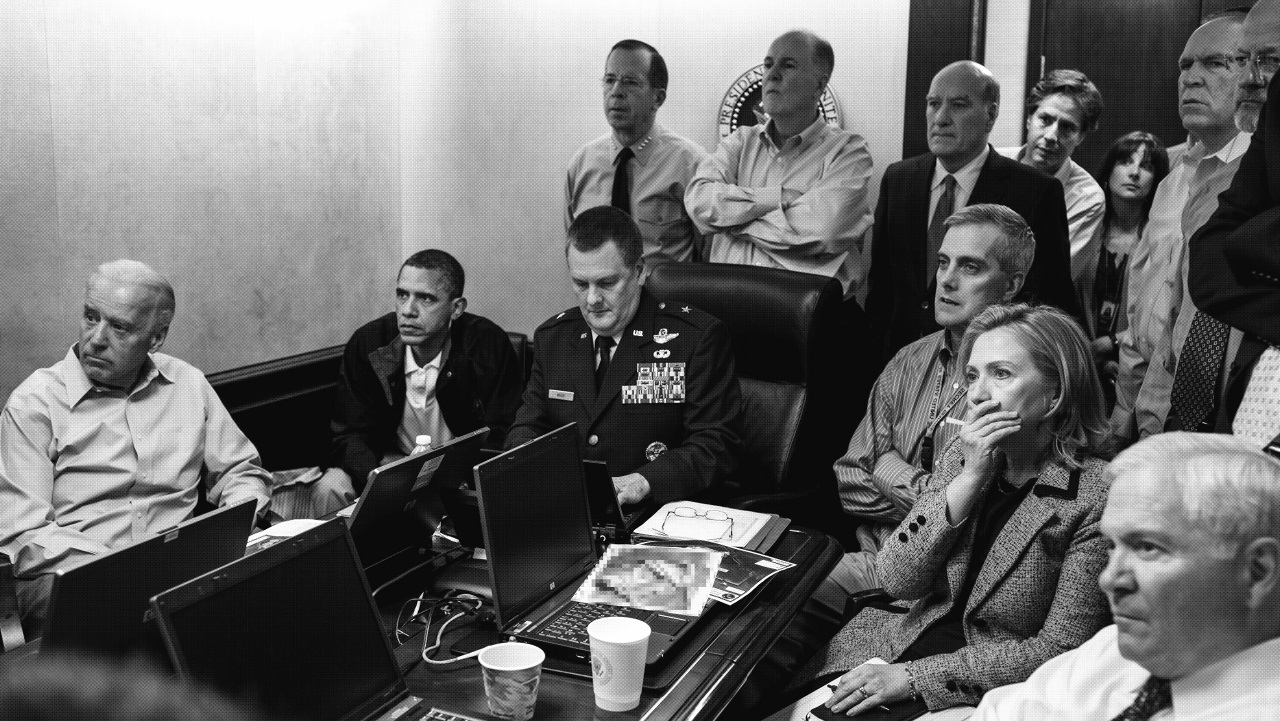Operation Neptune Spear
Two helicopters piloted by U.S. Army aviators transported 23 SEALs, an interpreter, and a combat dog to carry out the raid in Abbottabad, Pakistan.

Vest worn by a U.S. Navy SEAL Team Six member during raid on Abbottabad compound. Courtesy of Anonymous.
U.S. Navy SEAL Team Six is part of the Joint Special Operations Command, which is part of the U.S. Special Operations Command and conducts classified high-priority missions. The Red Squadron within U.S. Navy SEAL Team Six was chosen for the raid on Osama bin Laden’s compound because it had just returned to the United States from a deployment in Afghanistan. Since they were scheduled for normal leave, the Red Squadron operators were able to train for the mission without attracting unwanted attention. The individual SEALs were selected for their extensive experience in demanding operations and specialized skills.
SEAL is an acronym for Sea, Air, and Land, referring to members’ ability to operate in all conditions.

Vest worn by combat dog Cairo during raid on Osama bin Laden’s residence. Courtesy of Will Chesney.
Two helicopters piloted by Army aviators transported 23 SEALs, an interpreter, and a combat dog to carry out the raid. The mission was dubbed Operation Neptune Spear, a nod to the U.S. Navy SEAL insignia.
On May 1, 2011, at 10:30 p.m. local time, the team took off from a U.S. base in Jalalabad, Afghanistan. Two additional helicopters followed into Pakistan with extra fuel and a backup force.
Arriving at the compound, one helicopter became unstable, forcing a hard landing inside the compound. The team of SEALs onboard was safe, and the mission continued.

Bolt cutters used by a U.S. Navy SEAL Team Six member during Operation Neptune Spear. Courtesy of Anonymous.
Inside the compound’s walls, several SEALs approached the guesthouse where one of Osama bin Laden’s couriers lived. The SEALs found the door locked and were preparing to blow it open when they were fired upon through the door. The SEALs returned fire. Soon, the door opened, and a woman came out carrying a child, followed by other children. Beyond her, lying dead, was her husband, Abu Ahmad al-Kuwaiti, bin Laden’s primary courier.
Bullet shrapnel from the firefight lodged in the handle of a pair of bolt cutters one of the SEALs carried in his backpack.
When I personally got around to the front side of the main house, one of my guys said, “I shot one of the guys, his wife jumped in the middle of it, and I shot her.” And it kind of occurred to me, well, they’re trying to martyr themselves, to save their husbands. Something big is here. —Anonymous, U.S. Navy SEAL Team Six
In the main building, SEALs killed the second courier and his wife on the first floor and bin Laden’s son, Khalid, who was armed, on the second-floor landing. They killed Osama bin Laden in his third-floor bedroom, where he was found with at least one weapon nearby.
With Osama bin Laden dead, the SEALs collected documents, electronics, and other materials for intelligence exploitation. As a backup helicopter arrived, they blew up the downed helicopter to destroy its stealth technology. Locals gathered outside the compound, and Pakistani authorities began to mobilize a response to the late-night disturbance. After about 45 minutes on the ground, the SEALs boarded the helicopters, taking with them the collected materials and bin Laden’s body.
In Afghanistan, law enforcement and intelligence officers analyzed bin Laden’s DNA and took his fingerprints. Facial recognition analysis, together with the biometric information, ultimately confirmed his identity.
American forces then flew bin Laden’s body to the aircraft carrier USS Carl Vinson in the Arabian Sea. After religious funeral rites, Osama bin Laden was buried at sea so his gravesite would not become a shrine for his followers.
